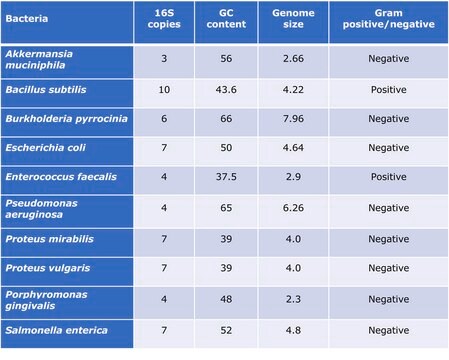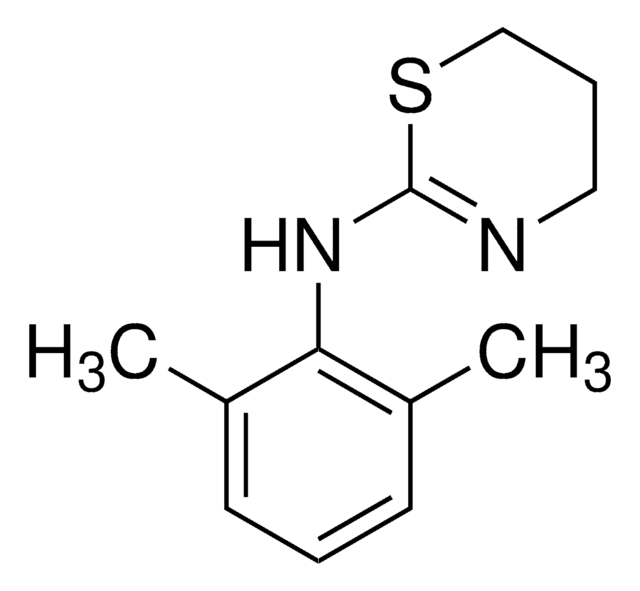MBD0004
Microbial DNA standard from Porphyromonas gingivalis
Suitable for PCR, sequencing and NGS, 10 ng/μL
Sign Into View Organizational & Contract Pricing
All Photos(1)
About This Item
UNSPSC Code:
41105500
NACRES:
NA.24
Recommended Products
Quality Level
form
liquid
concentration
10 ng/μL
technique(s)
DNA extraction: suitable
DNA sequencing: suitable
PCR: suitable
shipped in
ambient
storage temp.
−20°C
General description
Standardization of sample analysis is currently needed in microbiome genomics research workflow. Lack of standardization can lead to biases and errors in common processes during sample preparation and analysis such as sample amplification, sequencing and bioinformatics analyses.1 Prophyromonas gingivalis genomic DNA microbial standard can serve as standard for benchmarking the performance along the workflow of microbiomics or meta-genomics analyses and as a tool to increase reproducibility and allow comparison of results obtained by different labs.
Porphyromonas gingivalis, is a gram negative bacterium which is an etiologic agent of adult periodontitis, a chronic inflammatory disease characterized by the destruction of the supportive tissue surrounding teeth. Studies have shown that LPS from P. gingivalis plays an important role in this disease. 2-5 The association of the oral microbiota, including P. gingivalis, with various pathological states has been reported. These include development of Alzheimer′s disease6, role in oral cancers7, preterm birth8 and rheumatoid arthritis.9
Read here how to use our standards to ensure data integrity for your microbiome research.
Application
Suitable for Quantitative standard for PCR, Sequencing and NGS
Features and Benefits
- Individual microbial standard for microbiomics and meta-genomics workflow
- Suitable standard for PCR, sequencing and NGS
- Improve Bioinformatics analyses
- Increases reproducibility
- Compare results lab to lab
Physical form
The genomic DNA is provided at ≥10 ng/μl concentration in TE buffer pH 8.0.
Other Notes
It is recommended to avoid freeze thaw cycles of this product.
Storage Class Code
12 - Non Combustible Liquids
WGK
WGK 1
Certificates of Analysis (COA)
Search for Certificates of Analysis (COA) by entering the products Lot/Batch Number. Lot and Batch Numbers can be found on a product’s label following the words ‘Lot’ or ‘Batch’.
Already Own This Product?
Find documentation for the products that you have recently purchased in the Document Library.
Charles M Cobb et al.
International journal of women's health, 9, 551-559 (2017-08-30)
Significant evidence supports an association between periodontal pathogenic bacteria and preterm birth and preeclampsia. The virulence properties assigned to specific oral pathogenic bacteria, for example, Fusobacterium nucleatum, Porphyromonas gingivalis, Filifactor alocis, Campylobacter rectus, and others, render them as potential collaborators
Zijian Cheng et al.
Best practice & research. Clinical rheumatology, 31(1), 19-30 (2017-12-10)
There is an epidemiological association between periodontitis and rheumatoid arthritis (RA), which is hypothesised to lead to enhanced generation of RA-related autoantibodies that can be detected years before the onset of RA symptoms. Periodontitis is a common dysbiotic disease; tissue
Alice Harding et al.
Frontiers in aging neuroscience, 9, 398-398 (2017-12-19)
Longitudinal monitoring of patients suggests a causal link between chronic periodontitis and the development of Alzheimer's disease (AD). However, the explanation of how periodontitis can lead to dementia remains unclear. A working hypothesis links extrinsic inflammation as a secondary cause
Virulence factors of Porphyromonas gingivalis.
S C Holt et al.
Periodontology 2000, 20, 168-238 (1999-10-16)
Pourya Gholizadeh et al.
Biomedicine & pharmacotherapy = Biomedecine & pharmacotherapie, 84, 552-558 (2016-10-04)
The oral cavity is inhibited by many of the bacterial species. Some of them have a key role in the development of oral disease. Interrelationships between oral microbiome and systemic conditions such as head-and-neck cancer have become increasingly appreciated in
Articles
DNA standards enhance metagenomics research integrity, offering precise species study and mixed community standards.
Our team of scientists has experience in all areas of research including Life Science, Material Science, Chemical Synthesis, Chromatography, Analytical and many others.
Contact Technical Service







